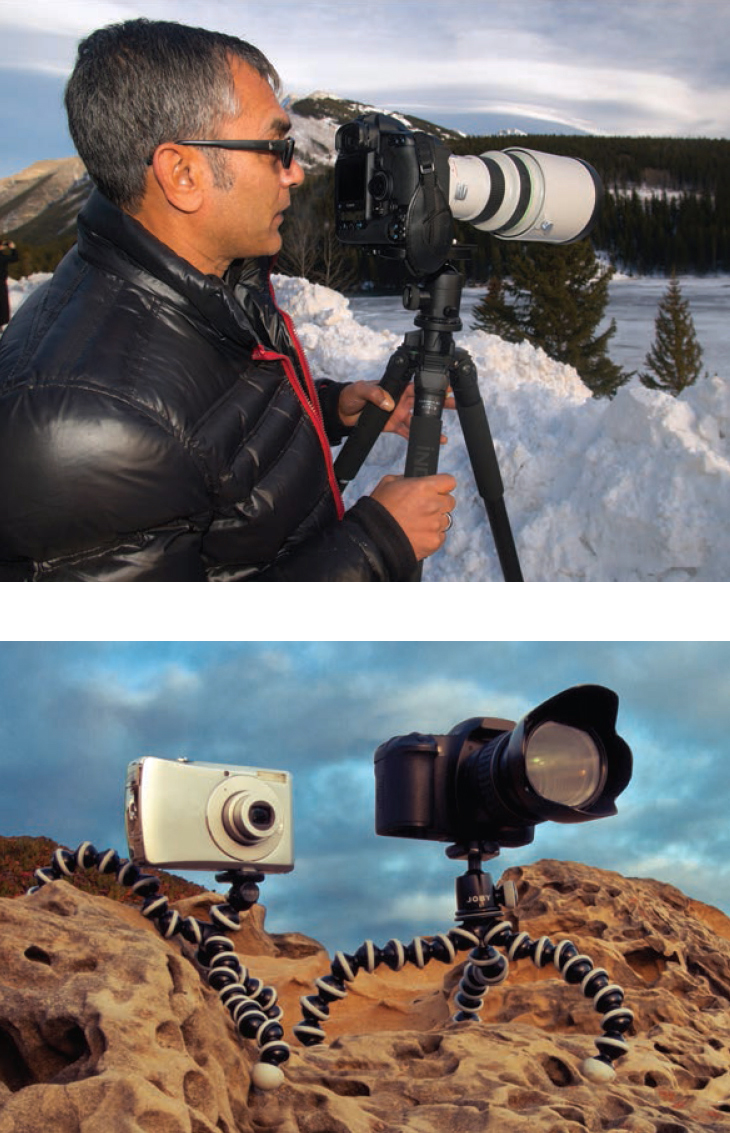86 : Gitzo Mountaineer carbon fibre tripod
1994
Tripods were quickly adapted from the world of photography to support and transport telescopes, and this was hugely aided by the development of carbon fibre models for lightness combined with strength and stability. A Gitzo tripod being used to photograph a Snowy Owl in Canada is shown here (top), while the adaptability of the innovative Gorillapod is put to good use in rocky terrain (above).
Camera tripods are essential to stabilise photographic equipment and were rapidly adapted from supports for astronomical telescopes, evolving into specialised birdwatching telescope stabilisers during the late 20th century.
Much of the early history of tripod use for telescopes and cameras is lost, though they were used for surveyors’ theodolites in the 19th century, and ornate carved tripod supports for early astronomical telescopes are known from the 17th century at least.
The vast majority of photographic and scope tripods use a design with a central height-adjustable column through the junction of three collapsible telescopic legs that are lockable in typically three sections (sometimes two or four), either using clips or screw-grips to lock the legs in place. The head is normally a detachable column-mounted unit with a screw-threaded mount plate, in turn also detachable, and a handle or adjuster to help the user control the angles in which the head tilts, pans and rotates. Bags or weights may be hung from the base of the central column to further stabilise the unit. Heads can be ball or pan-tilt, the former using a ball and socket joint, the latter with different controls in varied lockable planes, allowing a smoother pan and precise anchoring in position.
Reasonable quality tripods were often constructed from aluminium until the 1990s, when the advent of carbon fibre enabled strength, stability and lightness to be possible in one unit, a weight-reducing boon for use in the field. Gitzo’s Mountaineer model, launched in 1994, was the world’s first carbon fibre tripod. While photography is the main market for the company, along with other firms such as Manfrotto, Slik and Velbon, tripods specifically aimed at birders’ telescope requirements are now also widely produced.
Though used by a very small minority, monopods – one-legged supports with simpler head designs – are gaining in popularity, due to the ease with which they can be set up and collapsed, as well as their lightness. Some units can even double as a walking stick.
Another very recent innovation in tripod design has been the Gorillapod, manufactured by San Franciscan company Joby. A small unit for cameras that uses three flexible legs to wrap around branches and fences, the Gorillapod enables a camera to be stabilised in most habitats where a full size tripod might not fit. The device is modelled on the grip of great apes, hence its name, and is composed of linked chains of nine ball and socket joints.
